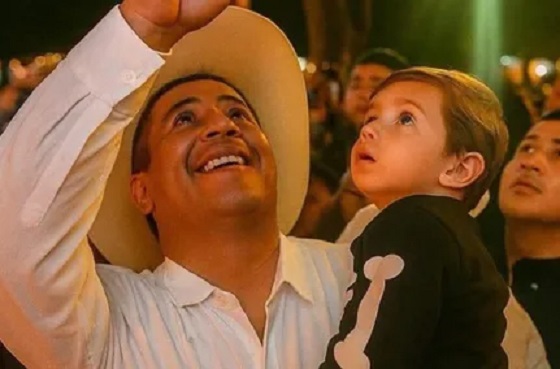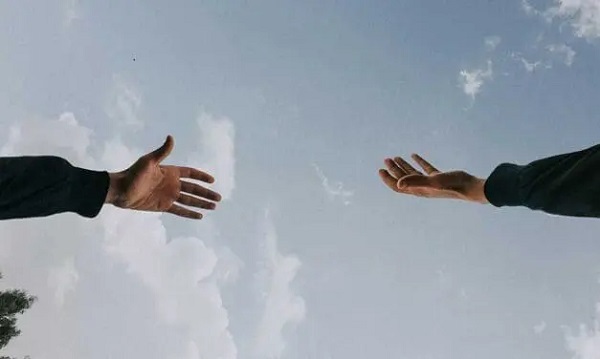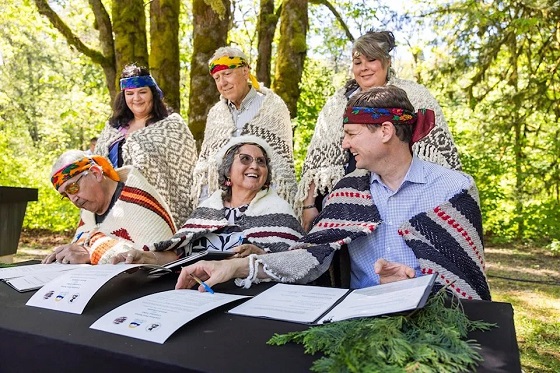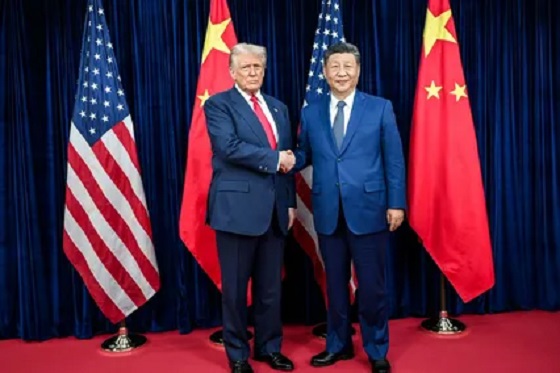Frontier Centre for Public Policy
Canada’s Indigenous burial hoax is still very much alive
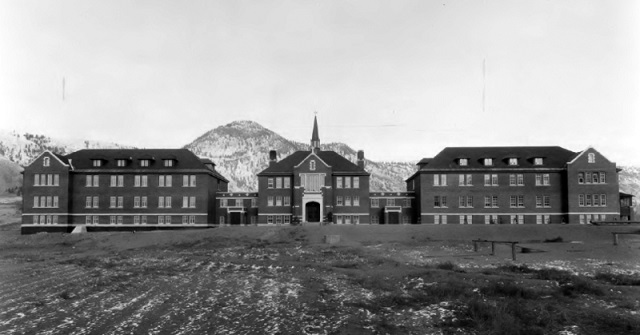
From the Frontier Centre for Public Policy
The Kamloops “confirmation” – growing more inconclusive all the time – consisted solely of signs of sub-surface soil irregularities: GPR cannot detect human or other organic material, and is only reliable in finding graves in known cemeteries.
History shows that many hoaxes, fake news stories, and conspiracy theories have proven nearly unassailable, even when proven false. So far, it seems a British Columbia burial canard will be added to this list.
The assertion that thousands of Indian Residential School children are buried in unmarked graves across the country, many of them victims of genocide, has been bandied about for decades. Its current promotion skyrocketed in mid-2021 following an Indigenous media release that was heard around the world:
May 27, 2021, Kamloops – It is with a heavy heart that Tk’emlúps te Secwé pemc Kukpi7 (Chief) Rosanne Casimir confirms an unthinkable loss that was spoken about but never documented by the Kamloops Indian Residential School. This past weekend, with the help of a ground penetrating radar (GPR) specialist, the stark truth of the preliminary findings came to light – the confirmation of the remains of 215 children who were students of the Kamloops Indian Residential School.
Although this claim and others like it are slowly being exposed as false, most Canadians still believe them.
This assertion is one of the findings of a February 2024 Macdonald-Laurier Institute research report that found “by a 79 to 21 ratio, respondents believed that ‘215 Indigenous residential school children were buried in a mass grave on school grounds in Kamloops, BC,’” a story lacking factual or historical evidence “but which most media and virtually all politicians have been reluctant to contradict.”
The Kamloops Burial Hoax
The Kamloops “confirmation” – growing more inconclusive all the time – consisted solely of signs of sub-surface soil irregularities: GPR cannot detect human or other organic material, and is only reliable in finding graves in known cemeteries.
Still, immediately following the Kamloops announcement, there were angry vigils, public displays of grief and shame, solidarity speeches, promises to revolutionize society, and the burning down of dozens of predominantly Roman Catholic churches.
The furore attending the Kamloops discovery accelerated as later findings were announced in other provinces, with the number of purportedly identified graves soon exceeding 2,000. Frequently heard among activists was the cry that these announcements were proof of a hidden “Holocaust” or “Final Solution” perpetrated against Aboriginal students by Canadians working in residential schools. The Kamloops school was alleged to have been a “concentration camp” and the 2021 “burials” evidence that there had been a horrific crime.
Evidence Challenging the Hoax
Entrenched public opinion on what increasingly looks like a burial hoax was damaged on August 18, 2023, when the 14 closely spaced soil disturbances detected using GPR in the basement of the Roman Catholic church on the site of the former Pine Creek Residential School were found to contain animal bones and debris, not human remains.
These findings were preceded by several other inconclusive discoveries.
In August 2021, a team of researchers in Shubenacadie, Nova Scotia, conducted an excavation at the former Shubenacadie Residential School in search of clandestine burials, but to no avail. Two months later, a search was conducted for unmarked graves on the site of the former Camsell Indian Hospital in Edmonton. The facility treated Indigenous people, many of whom suffered from tuberculosis, and some Indigenous leaders claimed that the dig would uncover patients that had been buried there, but no such evidence was discovered.
One discovery still making headlines is the unearthing of child-sized skeletons in a reputed “mass grave,” most likely the result of repeated accidental excavation and haphazard reburial by community grave diggers in the community cemetery on Alberta’s Saddle Lake Cree Indian Reserve. Without a shred of evidence, community members have attributed the death of some of these children to murder at the hands of a school official that was never reported to the police.
That there are no missing or secretly buried students who attended the reserve’s Indian Residential School is proven by the absence of relatives in the past or present searching for loved ones who never returned home. By comparison, in all of Canada, only two distant relatives have been identified as looking for their ancestors. In both cases, the children’s death certificates were found “buried” in the provincial archives whose records showed they were buried correctly on their home reserves.
Two easily located students’ records are surely vastly different from the “15,000 to 25,000 … maybe even more” children Murray Sinclair, former Chair of the Truth and Reconciliation Commission of Canada, has claimed may be missing.
It is becoming increasingly clear that the Kamloops claim, and the many copycat allegations it fomented, are fallacious. More commentators are awaking to the “mass grave” propaganda, even though the Canadian mainstream media barely responded to the Pine Creek discovery of presumptive graves containing no human remains, an important reason this hoax is still very much alive.
Indigenous Elites Support the Hoax
Among the most prominent of many Indigenous perpetrators of these inflammatory claims of murder, mass graves, and even genocide has been RoseAnne Archibald, former National Chief of the Assembly of First Nations, Canada’s largest and best-known Indigenous lobbying group.
At a July 15, 2021, Kamloops Indian Band public presentation, Archibald maintained that the Kamloops case told the world “how 215 innocent children died and were buried in unmarked graves” and that this “crime against humanity” constituted “genocide.”
Completely ignoring the caution of all the known researchers conducting these band-sponsored GPR searches, Archibald added that “this ground penetrating technology is revealing evidence, undisputable proof, that crimes were committed.”
In an interview broadcast by the BBC on August 4, 2021, Archibald charged that Canada’s Indian Residential Schools were “designed to kill” Indigenous children. “And we are seeing proof of that,” she said. “1,600 children, innocent children, have been recovered so far…. We are going to be in the thousands upon tens of thousands of children found. I am not sure how you can say that the recovery of that many little children does not signify what it is – genocide.”
Chief Archibald failed to mention that not a single child’s body “has been recovered so far” or that three years later, no bodies have been exhumed.
A lack of verified evidence of children buried in unmarked graves, some supposedly after priests murdered them, has done nothing to deter the federal government from funding several lavish programmes meant to continue this effort. One of these initiatives was the August 10, 2021, announcement of the allocation of $321 million to help Indigenous communities search burial sites at former residential schools and to support survivors and their communities.
Such programmes have doubtless hardened the public opinion expressed in the Macdonald-Laurier Institute poll. Allied beliefs discovered by the study are also at work: 54 percent of all respondents consider the legacy of Indigenous colonialization to be a problem today; 55 percent vs. 45 percent believe that Indigenous peoples should have a unique status because they were here first; by 48 percent for to 41 percent against, Canadians believe the harm from Indigenous residential schools will continue rather than be resolved; and 19 percent of Canadians think children at residential schools were “purposefully killed” with another 39 percent saying that children also died of neglect.
But the most critical determinant of the exceptionally high belief in the “killing field” at the Kamloops residential school lies in “political culture in Canada,” according to the study: “Much seems to come down to the culturally left-liberal political culture in Canada. That is, the elite norms that hold sway in the media and among mainstream politicians are predominantly culturally leftist.”
As the report says: “It is well established that the media and politicians can cue the issues they want voters to focus on, making decisions to elevate some questions and ignore others.”
This obvious assertion allowed the Macdonald-Laurier Institute report to argue that:
Canadians’ relatively high trust in institutions and cultural elites grants considerable latitude to them to frame the issues that people talk about while neglecting other questions…. There is no better illustration of this than the Kamloops mass graves question, where the code of silence practiced by the media and mainstream political parties has resulted in a clear majority of the public believing this false account.
On the Indigenous side, the Kamloops discovery, and its promise of lots of money, quickly unleashed a flood of similar GPR searches across Canada. To date, the unmarked graves are presumed to hold the remains of mainly unknown and unaccounted for individuals, primarily children, at 26 sites that have been identified since 1974[RC1] .
The allocation of funds to search for graves was followed in June 2022 by appointing an investigator to work with Indigenous communities and the government to propose changes in federal laws, policies, and practices related to unmarked graves at residential schools.
Kimberly Murray, former Executive Director of the Truth and Reconciliation Commission of Canada, was given a two-year appointment as Canada’s “independent special interlocutor for missing children, unmarked graves, and burial sites associated with the Indian Residential Schools.”
Murray’s appointment was simply one part of a campaign, whether deliberately organized or not, to label Canada as a genocidal country long engaged in the systematic murder of Indigenous children whose remains were dumped into mass graves.
Attempts to Stop Hoax Challengers
On June 16, 2023, Murray released an interim report arguing “urgent consideration” should be given to legal mechanisms to combat what activists have termed “residential school denialism.”
Unsurprisingly, her “opening words” in the report stated:
… my role is to give voice to the children. It is not to be neutral or objective – it is to be a fierce and fearless advocate to ensure that the bodies and Spirits of the missing children are treated with the care, respect, and dignity that they deserve” even if that “conflicts with my responsibility to function independently and impartially, in a non-partisan and transparent way.
This attack on the fundamental precepts of objective search for truth based on reason, logic, and scientific evidence rooted in a scientific paradigm that clashes with Indigenous ways of knowing gave her leave to label genocide denial as an “attack” on her version of the truth whenever there were announcements of the discovery of possible unmarked graves.
Moral certainty based on Indigenous ways of knowing, not objective evidence based on science, allowed Kimberly Murray to state that the Canadian government has a role in combatting “denialism,” an inflammatory distortion of what is simply scientific scrutiny, by giving “urgent consideration” to the legal tools that already exist to address the problem, including civil and criminal sanctions.
“They have the evidence. The photos of burials. The records that prove that kids died. It is on their shoulders,” Murray told a crowd gathered on the Cowessess Indian Reserve in Saskatchewan on June 16, 2023.
But there is no photographic evidence of children buried beside the shuttered Kamloops Indian Residential School nor at any of the other former Indigenous schools in Canada.
The only photographic evidence shows typical church burials and thousands of schoolchildren engaged in everyday activities. As for the records, they reveal that the few residential school children who died at the schools were buried in school cemeteries beside school staff members or the nearest reserve cemetery. But most deceased children were interred on their home reserves. All of them received a proper Christian burial after they died, most succumbing to contagious diseases like tuberculosis over which Indigenous people had little natural immunity.
Several of those labelled denialists have argued that there are few missing students, only missing records about their school attendance and death. On March 21, 2023, Murray inadvertently confirmed this assertion in her testimony before the federal government’s Standing Senate Committee on Indigenous Peoples when she said:
The family doesn’t know where their loved one is buried. They were taken to a sanatorium, an Indian residential school. They were just told … that they died. I can get the name of that [missing] individual, I can log into the National Centre for Truth and Reconciliation, find the name of the student, find a record, which will lead me down to another record, which will lead me to Ancestry.com. Why are families having to go to my office to find the death certificate of their loved one on Ancestry.com when the provinces and territories won’t just provide those records?
And then those records will lead you to where they’re buried, hundreds of miles away from their home community. We are now seeing families going to cemeteries. I get this a lot. The children aren’t missing; they’re buried in the cemeteries. They’re missing because the families were never told where they’re buried. Every Indigenous family needs to know where their child is buried. When we find that, and we know that they’re going to have a little bit of closure now, they know the truth and they have some answers, that’s what keeps us going. [emphasis added].
Even though there is little evidence that thousands of children’s deaths were not reported to their parents, and lots of evidence that this is not true, including the refusal of the National Centre for Truth and Reconciliation to remove the names of children whose cause of death and place of burial have been found, from its Memorial Register, a list now totalling over 4,100 named and unnamed “children who never returned home from residential schools.”
Murray’s statement contradicts the established public narrative about missing children. None of these facts have ever been communicated to the public by the mainstream media.
The latest anti-denial effort emanated from the Canadian Senate Standing Committee on Indigenous Peoples, which released a 30-page report on July 19, 2023, titled “Honouring the Children Who Never Came Home: Truth, Education and Reconciliation.” The study recommends “that the Government of Canada take every action necessary to combat the rise of residential school denialism.”
According to lawyer John Carpay, president of the Justice Centre for Constitutional Freedoms:
The use of state resources to promote one opinion on a scientific or historical matter is nakedly totalitarian. Apart from that, the senators’ aggressive language calling on government to “take every action necessary” suggests that it would be okay for the government to punish the likes of Michelle Stirling, Mark DeWolf, and others who dare to disagree with the dominant narrative.
The report fails to define “denialism” yet claims it “serves to distract people from the horrific consequences of Residential Schools and the realities of missing children, burials, and unmarked graves.” This omission suggests that “denialism” means disagreeing with the dominant narrative that Indian Residential Schools were houses of horror marked by racism and genocide.
Decades of an Aboriginal blood libel assertions hang over all these claims, with an army of activists and their supporters acting as its eager propagandists. It is long past time to find the underlying cause of this fake news by exhuming the reputed unmarked graves and identifying any remains they might contain. If that never happens, Canadians will be paying vast amounts forever to keep this hoax about missing and murdered Indigenous children alive.
Hymie Rubenstein is editor of REAL Indigenous Report and a retired professor of anthropology, the University of Manitoba.
Business
Capital Flight Signals No Confidence In Carney’s Agenda
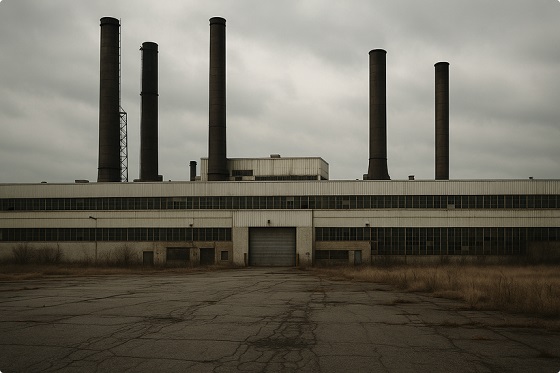
From the Frontier Centre for Public Policy
By Jay Goldberg
Between bad trade calls and looming deficits, Canada is driving money out just when it needs it most
Canadians voted for relative continuity in April, but investors voted with their wallets, moving $124 billion out of the country.
According to the National Bank, Canadian investors purchased approximately $124 billion in American securities between February and July of this year. At the same time, foreign investment in Canada dropped sharply, leaving the country with a serious hole in its capital base.
As Warren Lovely of National Bank put it, “with non-resident investors aloof and Canadians adding foreign assets, the country has suffered a major capital drain”—one he called “unprecedented.”
Why is this happening?
One reason is trade. Canada adopted one of the most aggressive responses to U.S. President Donald Trump’s tariff agenda. Former prime minister Justin Trudeau imposed retaliatory tariffs on the United States and escalated tensions further by targeting goods covered under the Canada–United States–Mexico Agreement (CUSMA), something even the Trump administration avoided.
The result was punishing. Washington slapped a 35 per cent tariff on non-CUSMA Canadian goods, far higher than the 25 per cent rate applied to Mexico. That made Canadian exports less competitive and unattractive to U.S. consumers. The effects rippled through industries like autos, agriculture and steel, sectors that rely heavily on access to U.S. markets. Canadian producers suddenly found themselves priced out, and investors took note.
Recognizing the damage, Prime Minister Mark Carney rolled back all retaliatory tariffs on CUSMA-covered goods this summer in hopes of cooling tensions. Yet the 35 per cent tariff on non-CUSMA Canadian exports remains, among the highest the U.S. applies to any trading partner.
Investors saw the writing on the wall. They understood Trudeau’s strategy had soured relations with Trump and that, given Canada’s reliance on U.S. trade, the United States would inevitably come out on top. Parking capital in U.S. securities looked far safer than betting on Canada’s economy under a government playing a weak hand.
The trade story alone explains much of the exodus, but fiscal policy is another concern. Interim Parliamentary Budget Officer Jason Jacques recently called Ottawa’s approach “stupefying” and warned that Canada risks a 1990s-style fiscal crisis if spending isn’t brought under control. During the 1990s, ballooning deficits forced deep program cuts and painful tax hikes. Interest rates soared, Canada’s debt was downgraded and Ottawa nearly lost control of its finances. Investors are seeing warning signs that history could repeat itself.
After months of delay, Canadians finally saw a federal budget on Nov. 4. Jacques had already projected a deficit of $68.5 billion when he warned the outlook was “unsustainable.” National Bank now suggests the shortfall could exceed $100 billion. And that doesn’t include Carney’s campaign promises, such as higher defence spending, which could add tens of billions more.
Deficits of that scale matter. They can drive up borrowing costs, leave less room for social spending and undermine confidence in the country’s long-term fiscal stability. For investors managing pensions, RRSPs or business portfolios, Canada’s balance sheet now looks shaky compared to a U.S. economy offering both scale and relative stability.
Add in high taxes, heavy regulation and interprovincial trade barriers, and the picture grows bleaker. Despite decades of promises, barriers between provinces still make it difficult for Canadian businesses to trade freely within their own country. From differing trucking regulations to restrictions on alcohol distribution, these long-standing inefficiencies eat away at productivity. When combined with federal tax and regulatory burdens, the environment for growth becomes even more hostile.
The Carney government needs to take this unprecedented capital drain seriously. Investors are not acting on a whim. They are responding to structural problems—ill-advised trade actions, runaway federal spending and persistent barriers to growth—that Ottawa has yet to fix.
In the short term, that means striking a deal with Washington to lower tariffs and restore confidence that Canada can maintain stable access to U.S. markets. It also means resisting the urge to spend Canada into deeper deficits when warning lights are already flashing red. Over the long term, Ottawa must finally tackle high taxes, cut red tape and eliminate the bureaucratic obstacles that stand in the way of economic growth.
Capital has choices. Right now, it is voting with its feet, and with its dollars, and heading south. If Canada wants that capital to come home, the government will have to earn it back.
Jay Goldberg is a fellow with the Frontier Centre for Public Policy.
Automotive
Carney’s Budget Risks Another Costly EV Bet

From the Frontier Centre for Public Policy
GM’s Ontario EV plant was sold as a green success story. Instead it collapsed under subsidies, layoffs and unsold vans
Every age invents new names for old mistakes. In ours, they’re sold as investments. Before the Carney government unveils its November budget promising another future paid for in advance, Canadians should remember Ingersoll, Ont., one of the last places a prime minister tried to buy tomorrow.
Eager to transform the economy, in December 2022, former prime minister Justin Trudeau promised that government backing would help General Motors turn its Ingersoll plant into a beacon of green industry. “By 2025 it will be producing 50,000 electric vehicles per year,” he declared: 137 vehicles daily, six every hour. What sounded like renewal became an expensive demonstration of how progressive governments peddle rampant spending as sound strategy.
The plan began with $259 million from Ottawa and another $259 million from Ontario: over half a billion to switch from Equinox production to BrightDrop electric delivery vans. The promise was thousands of “good, middle-class jobs.”
The assembly plant employed 2,000 workers before retooling. Today, fewer than 700 remain; a two-thirds collapse. With $518 million in public funds and only 3,500 vans built in 2024, taxpayers paid $148,000 per vehicle. The subsidy works out to over half a million dollars per remaining worker. Two out of every three employees from Trudeau’s photo-op are now unemployed.
The failure was entirely predictable. Demand for EVs never met the government’s plan. Parking lots filled with unsold inventory. GM did the rational thing: slowed production, cut staff and left. The Canadian taxpayer was left to pay the bill.
This reveals the weakness of Ottawa’s industrial policy. Instead of creating conditions for enterprise, such as reliable energy, stable regulation, and moderate taxes, progressive governments spend to gain applause. They judge success by the number of jobs announced, yet those jobs vanish once the cameras leave.
Politicians keep writing cheques to industry. Each administration claims to be more strategic, yet the pattern persists. No country ever bought its way into competitiveness.
Trudeau “bet big on electric vehicles,” but betting with other people’s money isn’t vision; it’s gambling. The wager wasn’t on technology but narrative, the naive idea that moral intention could replace market reality. The result? Fewer jobs, unwanted products and claims of success that convinced no one.
Prime Minister Mark Carney has mastered the same rhetorical sleight of hand. Spending becomes “investment,” programs become “platforms.” He promises to “catalyze unprecedented investments” while announcing fiscal restraint: investing more while spending less. His $13-billion federal housing agency is billed as a future investment, though it’s immediate public spending under a moral banner.
“We can build big. Build bold. Build now,” Carney declared, promising infrastructure to “reduce our vulnerabilities.” The cadence of certainty masks the absence of limits. Announcing “investment” becomes synonymous with action itself; ambition replaces accountability.
The structure mirrors the Ingersoll case: promise vast returns from state-directed spending, redefine subsidy as vision, rely on tomorrow to conceal today’s bill. “Investment” has become the language of evasion, entitlement and false pride.
As Carney prepares his first budget, Canadians should remember what happened when their last leader tried to buy a future with lavish “investment.”
A free economy doesn’t need bribery to breathe. It requires the discipline of risk and liberty to fail without dragging a country down. Ingersoll wasn’t undone by technology but by ideological conceit. Prosperity cannot be decreed and markets cannot be commanded into obedience.
Every age invents new names for old mistakes. Ours keeps making the same ones. Entitled hubris knows no bounds.
Marco Navarro-Genie is vice-president of research at the Frontier Centre for Public Policy and co-author, with Barry Cooper, of Canada’s COVID: The Story of a Pandemic Moral Panic (2023).
-

 Alberta2 days ago
Alberta2 days agoAlberta government’s plan will improve access to MRIs and CT scans
-

 Business2 days ago
Business2 days agoTrump’s Tariffs Have Not Caused Economy To Collapse
-

 Daily Caller2 days ago
Daily Caller2 days agoTrump Reportedly Planning Ground Troops, Drone Strikes On Cartels In Mexico
-

 Economy1 day ago
Economy1 day agoWelcome to the Energy Humanist Club! Bill Gates breaks the moral monopoly against fossil fuels
-

 Brownstone Institute2 days ago
Brownstone Institute2 days agoBizarre Decisions about Nicotine Pouches Lead to the Wrong Products on Shelves
-

 International2 days ago
International2 days agoHours after Trump’s warning, Nigerian Christians massacred by Islamist gunmen
-
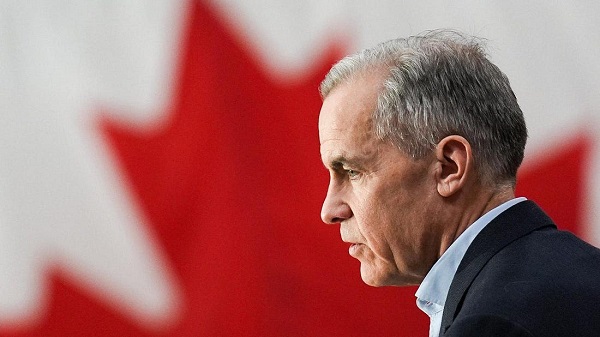
 Business2 days ago
Business2 days agoCarney government’s first budget should signal end to crippling ‘climate’ policies
-
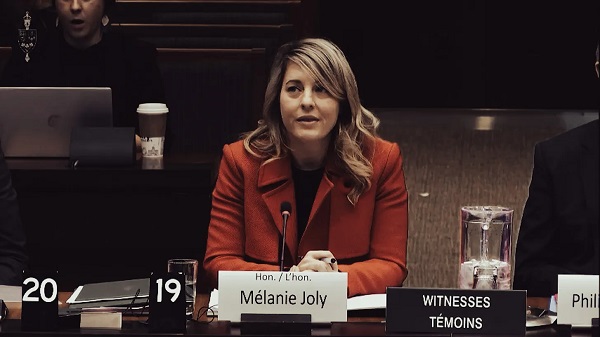
 Business1 day ago
Business1 day agoNo Jobs Clause: Liberals Under Fire Over Stellantis Deal in Fiery Committee Showdown





